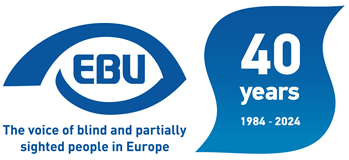In June 2018 the Faculty of Law of Maastricht University invited the EBU to participate in the workshop “Crafting Intellectual Property Law to Enhance Disability Access to Artistic Works through 3D Printing Technology” in order to include disabled people’s perspective on the subject. Considering the experience of the Italian Union of the Blind and Partially Sighted (UICI) on the accessibility of art works, Fernando Torrente, Chair of the UICI Commission on cultural heritage and art works, was asked to participate in the workshop. He presented a paper on art accessibility and new technologies, in line with the objective of the workshop that was the reflection on social, cultural and technical challenges of 3D printing of 2D art works and the international and European legal framework of copyright exceptions for disability rights. The conclusions of the workshop offered the opportunity for EBU and UICI to contribute to the drafting of policy recommendations for international harmonization and standards on the access of persons with disabilities to works of art through 3D printing technologies. The EBU/UICI contribution is published at the end of this article. Moreover, the workshop will have a follow up in 2019 with the publication of a book on the same subject that will include visually impaired people’s perspective on art accessibility. The book will be available also in audio format.
The EBU/UICI contribution to the workshop conclusions is as follows:
Contribution to the drafting of policy recommendations for international harmonization / developing international standards on the access of persons with disabilities to works of art through 3D printing technologies
The European Blind Union (EBU) and the Italian Union of the Blind and Partially Sighted (UICI) call for the harmonization of copyright laws for what concerns the reproduction of works of art in order to make them accessible to people with disabilities and in particular to people with visual impairment, fulfilling the objective of Article 30 of the United Nations Convention on the Rights of Persons with Disabilities (UNCRPD), through a study and comparison process similar to the one that led to the Marrakesh Treaty.
It is very important that persons with disabilities, through the organizations that represent them, are involved in every step of this process.
This harmonization also has to take into account the importance of the principles of 'Design for All', that must be the basis of every production.
We also recommend that guidelines be developed for the adequate training of reception staff and guides to ensure optimal interaction with and a better experience to visitors with disabilities. We recommend that those who make reproductions work together with persons with visual disabilities competent in this field, in order to obtain high quality products that fully fulfil their educational, cognitive and aesthetic purposes.
In conclusion, we can say that today the technologies that allow for the implementation of the right to enjoy art works are within reach, so it is now time to adapt legislation accordingly.

